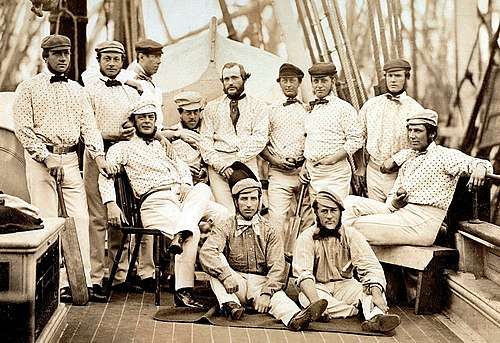James Grundy (cricketer)
James "Jem" Grundy (5 March 1824 in New Radford, Nottingham – 24 November 1873 in Carrington, Nottingham) was an English cricketer during the game's roundarm era. He was one of the notable bowlers of the 1850s and was frequently among the leading wicket-takers. He bowled right-arm fast roundarm and is known to have occasionally used fast underarm deliveries, but he is said to have varied his pace. He batted right-handed and was an occasional wicket-keeper.

- For the chess player of the same name, see James Grundy (chess player).
Grundy's known first-class career spanned the 1850 to 1869 seasons. He took 1,137 wickets in 298 matches with a bowling average of 12.81 with a best analysis of 9/19. He had 84 5-wicket innings and 24 10-wicket matches. He scored 5,898 runs with the bat at an average of 12.65 with a highest score of 95. He took 233 catches and made 2 stumpings.
In 1857, he became the first person to be given out handled the ball.[1]
At the end of the 1859 English cricket season, Grundy was one of the 12 players who took part in cricket's first-ever overseas tour when an England cricket team led by George Parr visited North America.
References
- "Deadly on his day". ESPN Cricinfo. 13 June 2017. Retrieved 13 June 2017.
External links
Further reading
- H S Altham, A History of Cricket, Volume 1 (to 1914), George Allen & Unwin, 1926
- Derek Birley, A Social History of English Cricket, Aurum, 1999
- Rowland Bowen, Cricket: A History of its Growth and Development, Eyre & Spottiswoode, 1970
- Arthur Haygarth, Scores & Biographies, Volumes 3–9 (1841–1866), Lillywhite, 1862–1867
- John Major, More Than A Game, HarperCollins, 2007 – includes the famous 1859 touring team photo taken on board ship at Liverpool